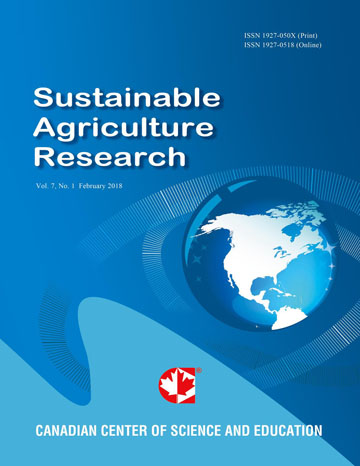Genetic Response of Taro to Taro Leaf Blight Disease for Food System Resilience
- Zippora Appiah-Kubi
- Ernest Baafi
- Habbibah Aggrey
- Vashti Owusu-Nkwantabisah
- Sumaila Fuseini
Abstract
Taro (Colocasia esculenta) is of great economic importance in Ghana. Its production is constraint by high incidence of Phytophthora colocasiae, causing heavy corm yield losses and impacting farmers livelihood negatively. Breeding for taro leaf blight disease (TLBD) resistance requires exploitation for useful genetic variation from local and introduced germplasm. The objectives were to identify fungal phytopathogenic agents responsible for and/or associated with taro leaf blight disease and taro genotypes with useful genetic variation for breeding resistant cultivars. Five elite taro genotypes were evaluated alongside local variety as check. Blotter method, Potato Dextrose Agar and Carrot Agar media were used in the isolation and identification of fungi. Taro genotypic differences suggest that superior genotypes can be identified and selected for improvement on TLBD tolerance and corm yield. Genotypes BL/SM 115 and BL/SM 16 which had less than 25% TLBD incidence, minimum damage of the disease, higher corm yield and higher corm dry matter content were candidate parents for taro improvement in Ghana. Twenty-one fungal species were identified. Carrot Agar was the best medium for identification of Phytophthora sp. However, further studies are required to confirm phytopathogenic symbiotic association of P. colocasiae with other fungi in causing TLBD disease in Ghana.
- Full Text:
 PDF
PDF
- DOI:10.5539/sar.v14n2p35
Index
Contact
- Joan LeeEditorial Assistant
- sar@ccsenet.org
